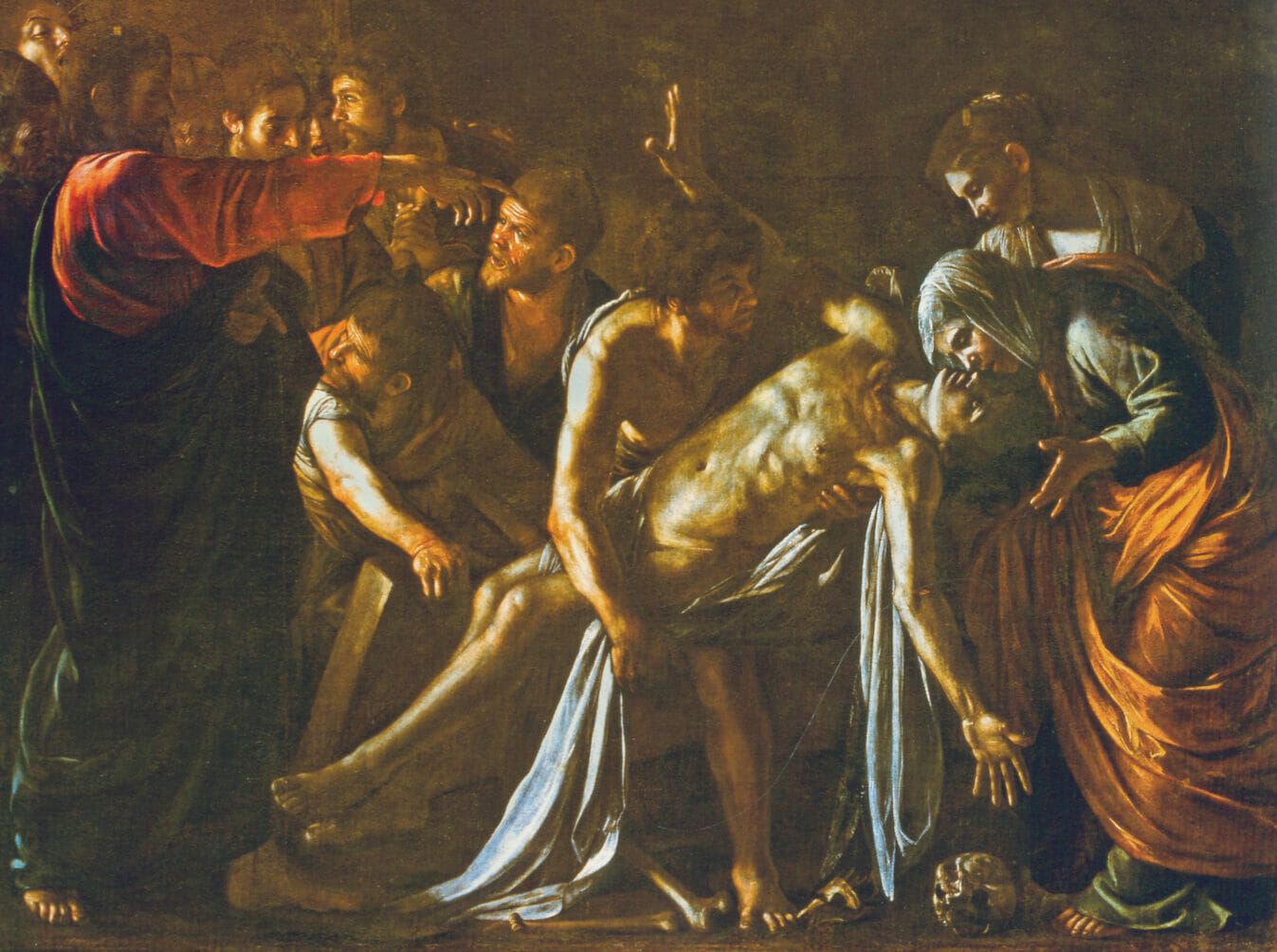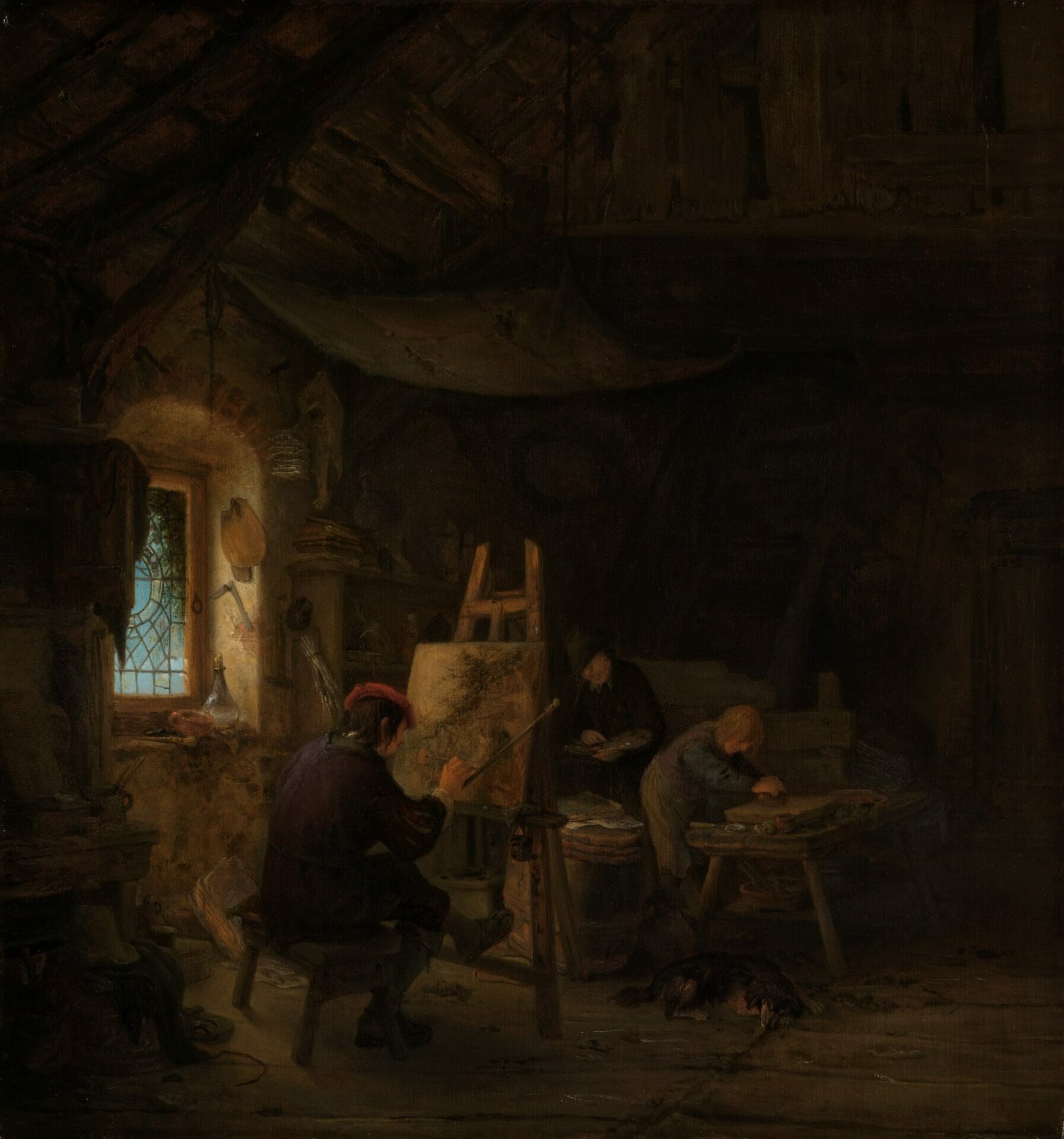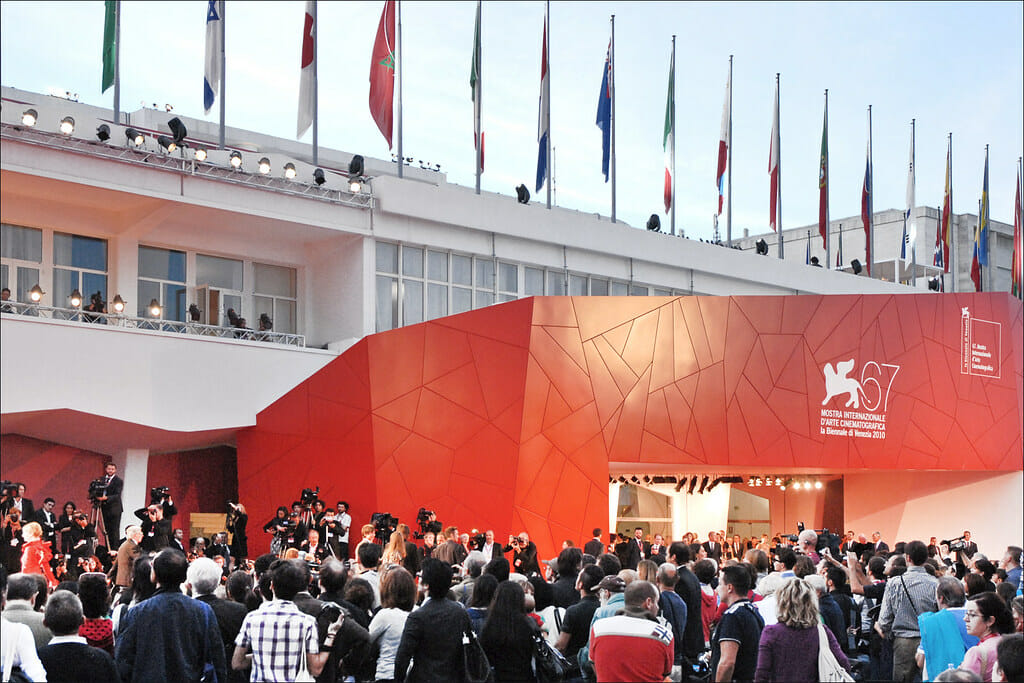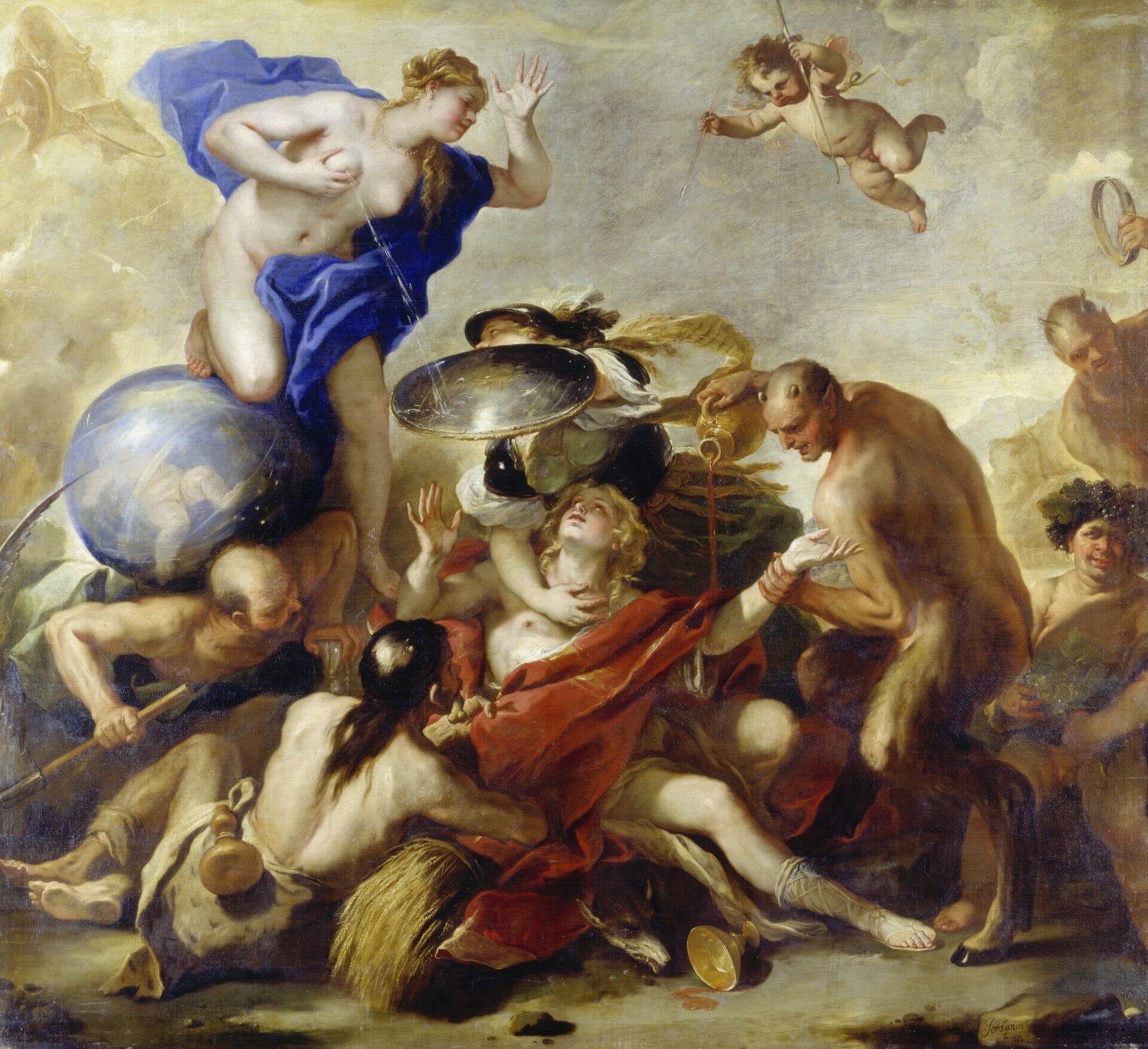
Youth Tempted by the Vices | A Neapolitan Allegory of Life
Artist
Year
Country
Material/Technique
Dimensions
Naples experienced an era of artistic splendour during the 17th century. During the first two decades, Caravaggio lived in the city, forever leaving his mark on the artistic environment. The painter, already at the height of his career, had numerous commissions that still adorn Neapolitan churches and private collections. There were two generations of painters who worked along the lines of caravaggism. Their works had strong contrasts of chiaroscuro that gave them drama and great realism. The second generation took inspiration from Jusepe de Ribera, known as Spagnoletto. He was a Valencian painter who developed his own strand in the footsteps of Caravaggio: tenebrism. As the name suggests, Ribera’s subjects radiate an intense darkness. Youth Tempted by the Vices painted by Luca Giordano is a clear example of Neapolitan art and its influences from the XVII century.
Luca Fapresto, the quickest Neapolitan painter
Luca Giordano was born in Naples in 1634, the son of a painter, with whom he began his training. He became one of the greatest exponents of 17th-century Neapolitan painting. He had the nickname Luca Fapresto, which means Luca is quick, because of his quickness in creating his works. Giordano was able to rework all the stimuli he received and build a career spanning more than 50 years. His artistic production numbers thousands of works. He worked on public and private commissions in the most important cultural centres, such as Venice, Rome, Florence and Madrid. Like any artist worthy of the name, Luca Giordano’s production goes through phases.
Giordano began to make a name for himself in the footsteps of his master Ribera, and he studied the biggest artists from the previous century, like Tiziano, Michelangelo and then Rubens. In his early artistic maturity (1660-1680) he was influenced by the Neo-Venetian school, leaving behind Ribera’s tenebrism to make room for a new use of light and colour. His works focused on mythological and allegorical subjects in this period, close to a still classicist and rubensian matrix.
The allegory of life through mythology
Youth Tempted by the Vices is a work dating from 1664, painted during a stay in Venice. The author narrates through an allegory, the life of a young hero through various figures from Greco-Roman mythology. In the centre, there is a boy, the Youth, protected by Minerva, the goddess of wisdom. She encircles him from above with her shield. The other figures in the composition are the Vices, threats veiled in flattering behaviour, coveting the hero’s virtues. Above left, Venus descending from her chariot, sprays from her breast, towards the young man, the poisoned milk of love, diverted by Minerva. Below is Kronos holding the world on his shoulders and brandishing a scythe and hourglass, symbols of death and transience. Inside the globe, there is a cupid, a reference to the last verse of the Divine Comedy: “Amor che move il sole e le altre stelle”.
At the Young Man’s feet is Siphilus, a shepherd whose name refers to Syphilis, a venereal disease that spread in the 15th century, causing various physical scabrousness, from which the shepherd also suffers. To the side is a dog licking wine poured by a satyr to the right of the young man. The figure behind the satyr is Bacchus, the god of inebriation (Bacchus was one of Caravaggio’s favourite subjects). At the upper right is Love, ready to shoot an arrow at the young man. Today the work is located in the Städel Museum, in the German town of Frankfurt am Main.
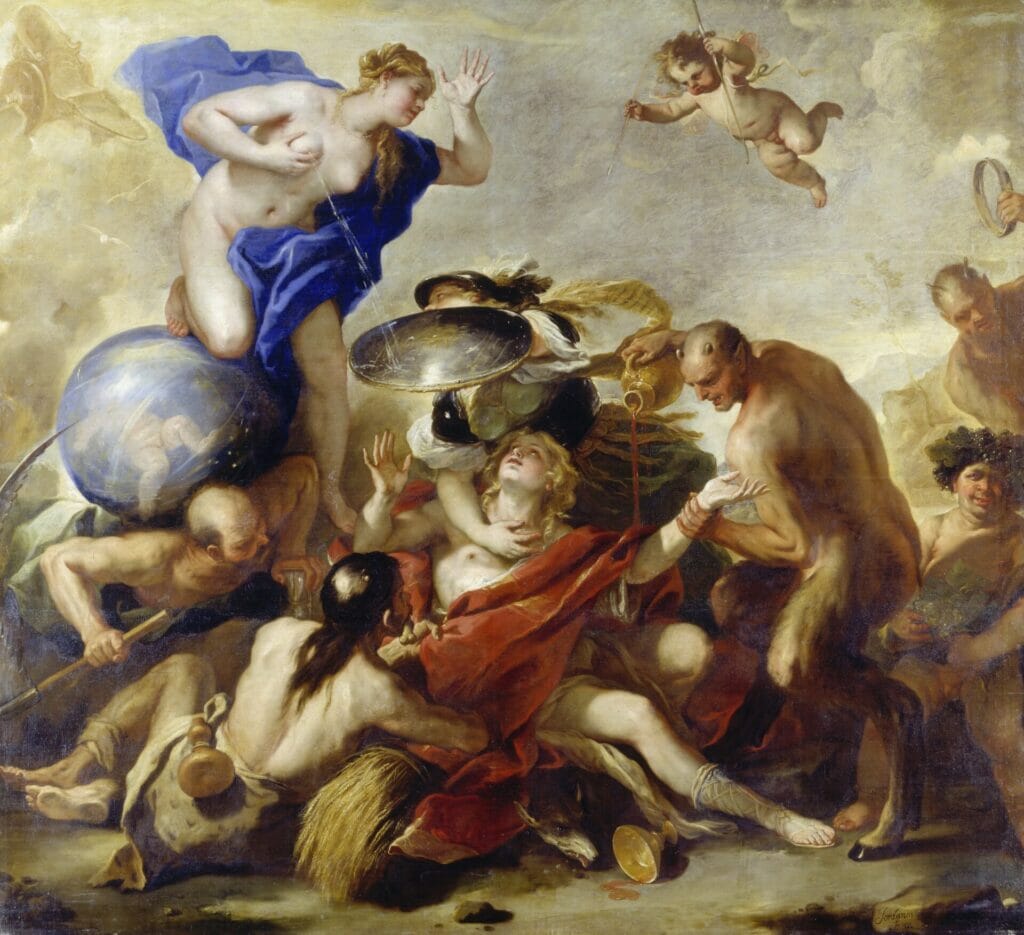
Connections across the time
Giordano took inspiration for his work from Rubens‘ Flemish master, Otto van Veen, who proposed the same subject matter as the Neapolitan painter and many others. With the new century, in artistic and literary works, artistic subjects took on a moralising aesthetic in which form and content are complementary. In fact, in 1699, Telemachus was published, an epic about the Greek hero written by François Fénélon. The cover of the book features a depiction very similar to Giordano’s painting. According to mythology, Telemachus was the only son of Odysseus and Penelope. His name means he who fights afar and indeed, he set out in search of his father under the protection of Minerva, the Greek goddess of wisdom and war. In Fénélon’s transposition, she admires Telemachus’ wisdom and virtue. Thus she develops an obsessive carnal passion for him. Her love for him leads her to make him immortal so that they can be together forever.
Youth in Neapolitan style…
Among the current leading figures from Naples, there is Paolo Sorrentino. The filmmaker presented the film Youth – La Giovinezza at the 2015 Cannes Film Festival. The film, stars Michael Caine in the role of Fred Ballinger, a composer at the end of his career. The artist is no longer able to make music since his wife’s hospitalisation for dementia and even refuses to work for the Queen of England.
Set in a Swiss resort, the plot tells the lives of several characters who share a common sense of loss and abandonment towards their careers and feelings. Central is the relationship between Fred and his friend Mick Boyle, a director struggling with his last film The Last Day of My Life, an artistic testament.
While the former lives in total apathy, the latter in an illusory joy. It vanishes when the actress he wanted as a leading lady rejects him for more profitable projects. After telling his friend to take back his life and stop surviving, Mick commits suicide by throwing himself off the balcony. Fred, who appears to be in his usual apathetic state, experiences a profound redemption that leads him to visit his wife in Venice and accept that the songs he composed for her will be sung at the English court. Fred rediscovers the lost youth that Mick so longed for.
…through the Arts
In Luca Giordano’s work Youth Tempted by the Vices and in Paolo Sorrentino’s film Youth – La giovinezza, youth emerges as a universal and fascinating theme. Both artists capture the essence of this period, in which one has the beauty and strength to face the world.
With his painting, Giordano expresses the dynamism and the poignant temptation to give in to vices during youth. Sorrentino, in his film, instead explores the lives of two elderly friends, revisiting their youth full of passion and ambition.
Both highlight how time passes, taking away the virtues of this phase of life. But what emerges is the depth of their memories and experiences. Giving in to vices or being overzealous in one’s values during the age of prosperity most often leads to a life of regret and remorse.
Tag
Buy a ☕ for Hypercritic








